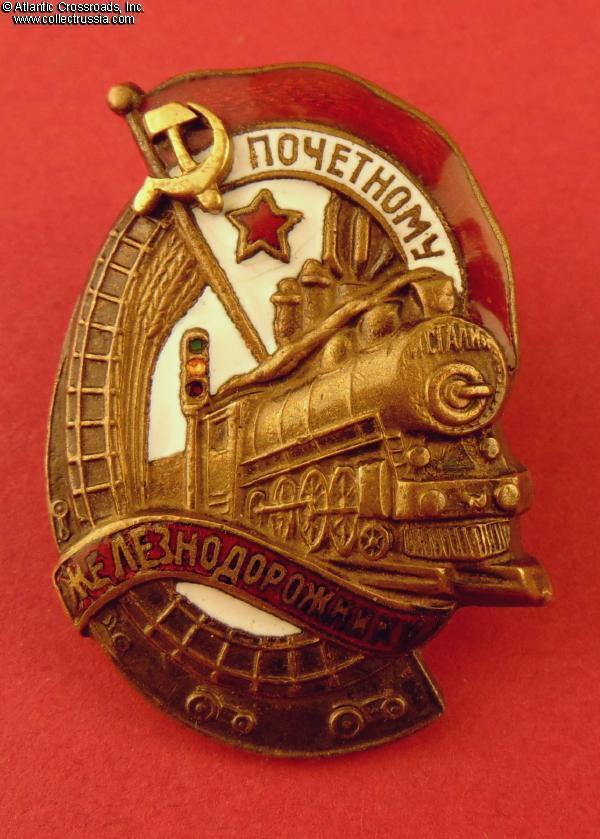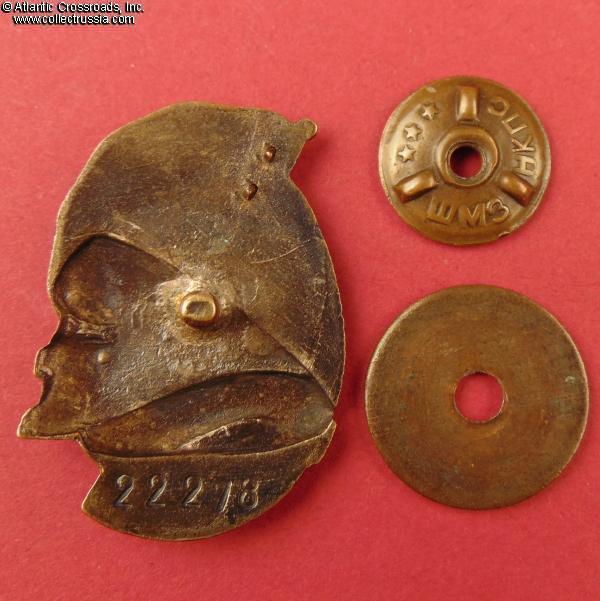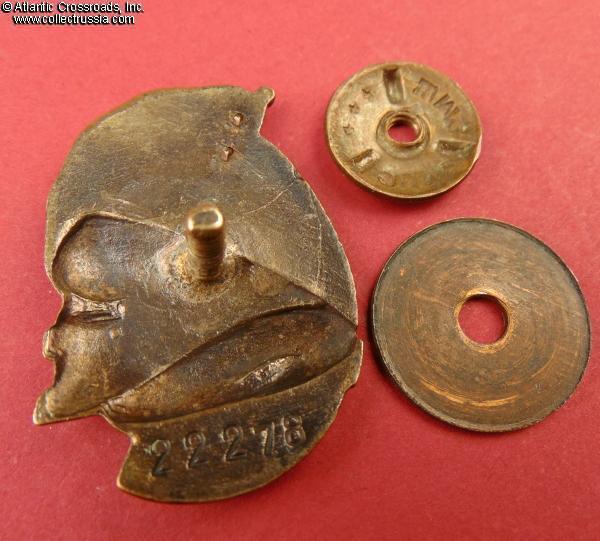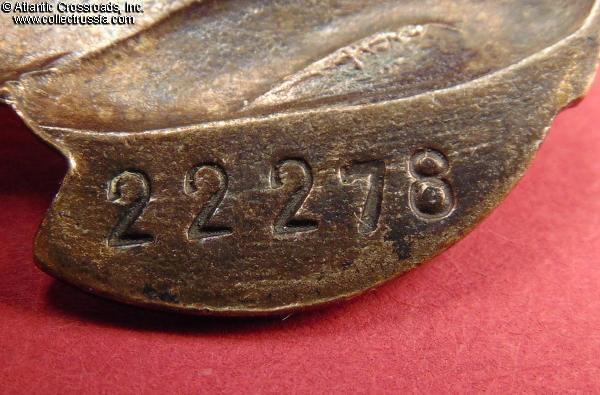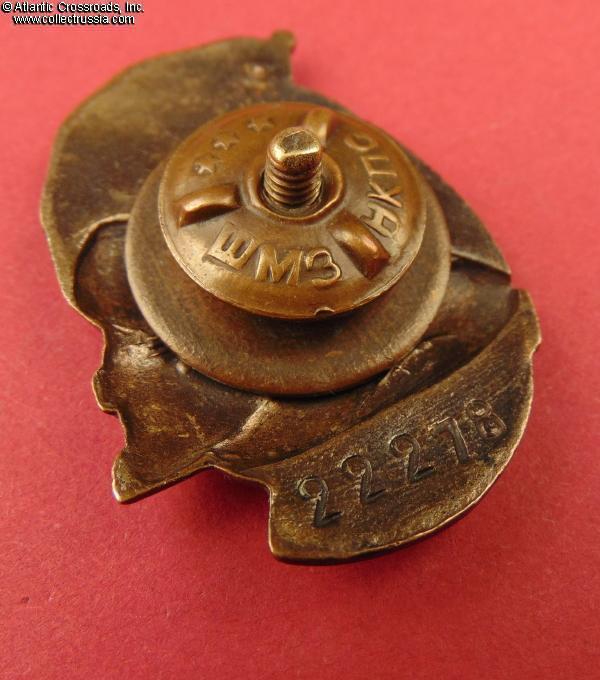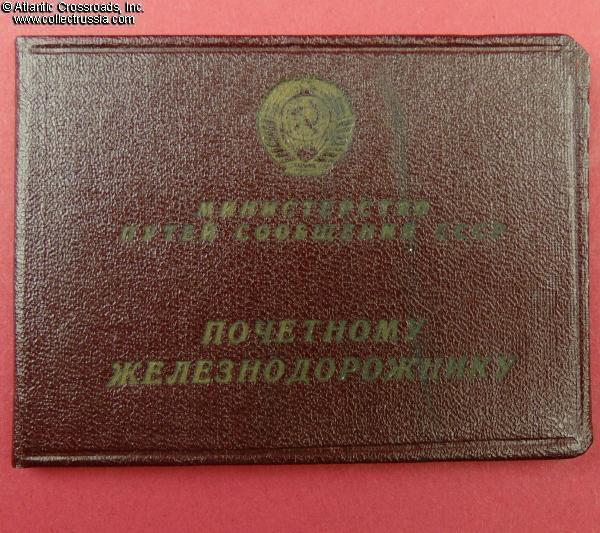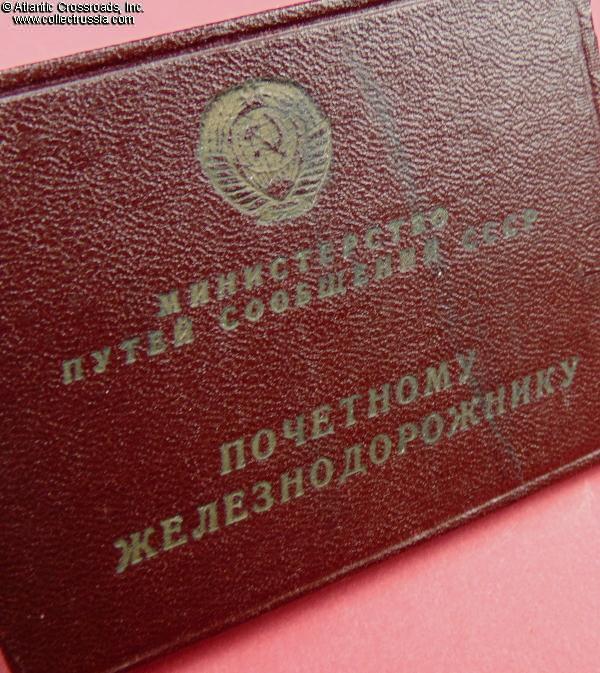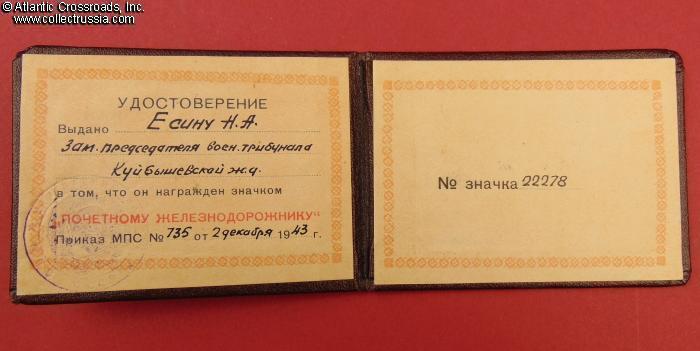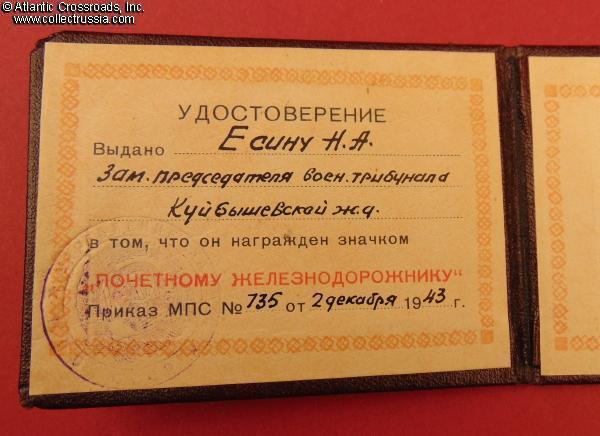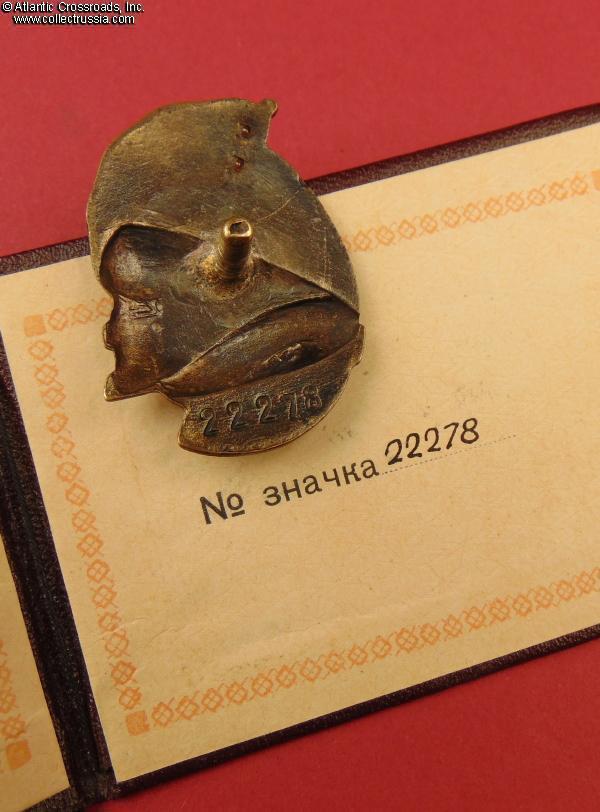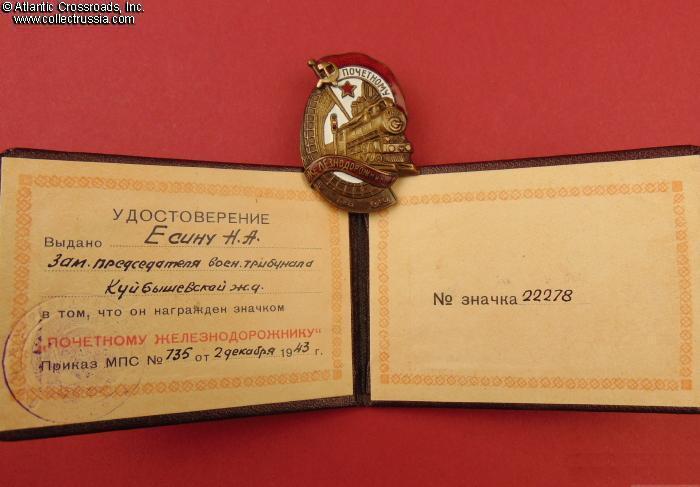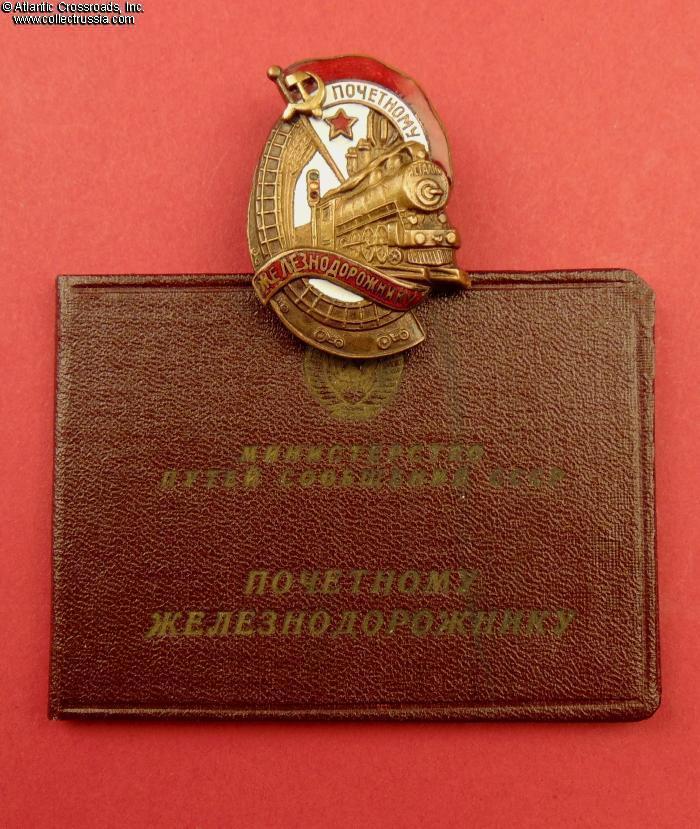
Badge of Honored Railway Employee, Type 2, #22278, with a document, awarded on 2 December 1943 to N A Yesin, Deputy Chairman of the Court Martial of the Kuybyshev Railroad.
In brass and enamels; measures 45.6 mm in height, 33.4 mm in width; weighs 17.0 g without the screw plate and washer. This piece is among the earliest issues of what is typically considered "WW2 version" of the badge. It features distinctive counter-relief to the locomotive, flat area in the upper part of the reverse and flat bottom with stamped serial number.
The badge is in very fine to excellent condition, well above average for a badge of mid-war vintage. The red enamel on the banner is perfect, completely free of even the microscopic traces of wear that could be found
In brass and enamels; measures 45.6 mm in height, 33.4 mm in width; weighs 17.0 g without the screw plate and washer. This piece is among the earliest issues of what is typically considered "WW2 version" of the badge. It features distinctive counter-relief to the locomotive, flat area in the upper part of the reverse and flat bottom with stamped serial number.
The badge is in very fine to excellent condition, well above average for a badge of mid-war vintage. The red enamel on the banner is perfect, completely free of even the microscopic traces of wear that could be found with a 10x loupe. The red enamel on the scroll near the bottom has a couple of tiny chips that are nearly unnoticeable to the naked eye, otherwise intact. The white enamel on the background has some miniscule contact marks but no chips or other noticeable wear. The red star and colored roundels (lenses) of the semaphore are completely intact.
The raised details of the artwork are well-preserved and crisp. The raised inscription "I. Stalin" is perfectly defined, shows practically no wear. There is attractive even patina to the brass throughout while some of the original silver finish is still visible in recessed areas on the obverse along the edge. The screw post is full-length, over 12 mm. It comes with original screw plate maker-marked ShMZ NKPS (Mechanical Stamping Factory, People's Commissariat of Roads of Transportation) and a period washer which is probably also original to the badge.
The document is a very uncommon, relatively early post-war issue probably dating to 1948-49. Like a standard certificate for the badge, it is of booklet format with hard cover wrapped in maroon leatherette. Unlike the more common versions however, it is simplified: there is no impressed depiction of the badge on the cover; the cover instead has just the impressed writing in gold "Ministry of Roads of Transportation of the USSR. To an Honored Railway Employee". There is also a Soviet national emblem of 1948 model featuring 16 scrolls representing the number of republics in the USSR. Note that the reference to the ministry is a post-war feature: in 1946, all Soviet Narkomats (People's Commissariats) were renamed ministries.
The interior of the document is also simplified: there are no pages explaining the privileges of the recipient; nor is there a provision for the photograph. There is however a serial number as well as the date of the award and ink stamp. Interestingly, in the manner common to Soviet award documents issued belatedly, the typographically printed line concerning the award decree states that the badge was bestowed by an MPS (Ministry of Roads of Transportation) decree # 735 - whereas in fact, it was still called NKPS (Narkomat of Roads of Transportation) on 2 December 1943 when the badge was awarded.
The document is in near mint condition. The cover is perfect, shows practically no wear. The binding is tight. The internal pages are immaculately clean.
Note the timing and location: located on the eastern bend of the Volga River north of Stalingrad, the city of Kuybyshev (now known as Samara) was the seat of the Soviet government which had evacuated there from the besieged Moscow in the fall of 1941. Beside serving as the communications hub for Stalin and his administration from 1941-43, Kuybyshev Railroad was also a key conduit for evacuating industrial equipment into the Soviet interior and moving war materiel, troops and foodstuffs from the Urals, Siberia and Central Asia to the frontlines. It played a particularly important role in the Battle of Stalingrad when much depended on the railroads carrying Soviet reinforcements into the battle from the vast expanses of the USSR north and east of Stalingrad.
Note also the position of the award recipient. Owing to the paramount importance of railways in the Soviet transportation system, the
railroads were always run as basically a military organization. Even in the pre-war years, a minor infraction on the part of the railway
employee could very easily lead to a long sentence in a GULAG prison camp. At the height of the war, the deputy chief of the Court Martial
of a major railroad was a much-feared figure indeed!
$450.00 Add to cart


